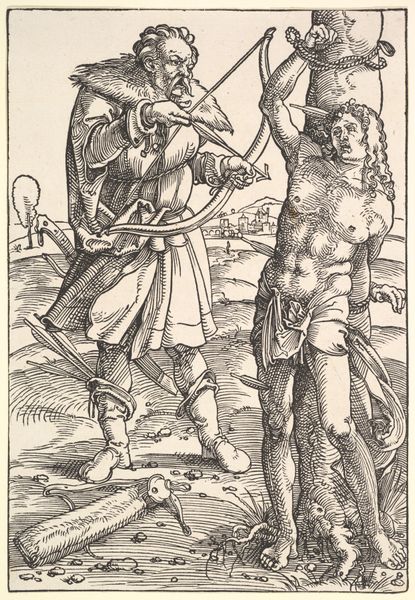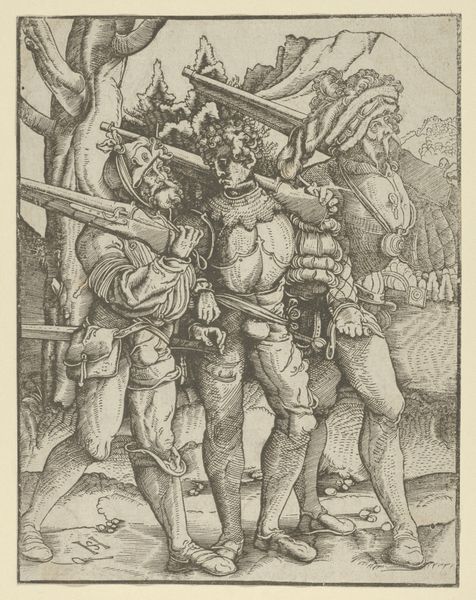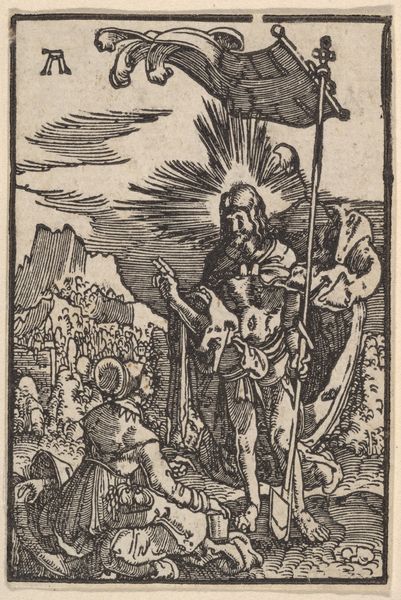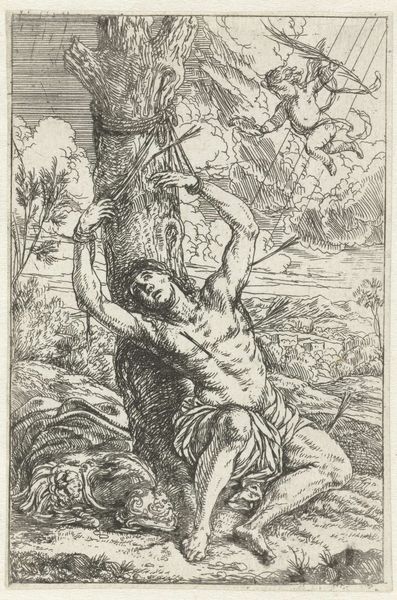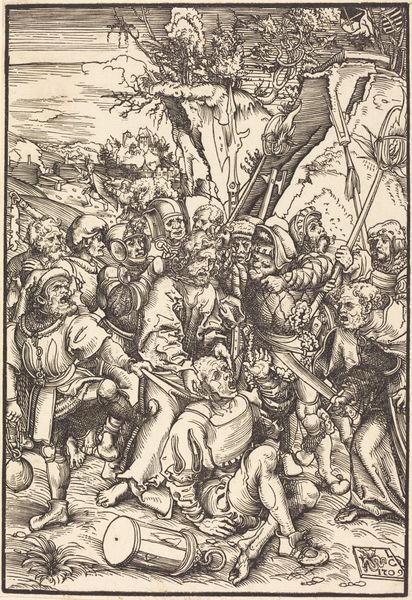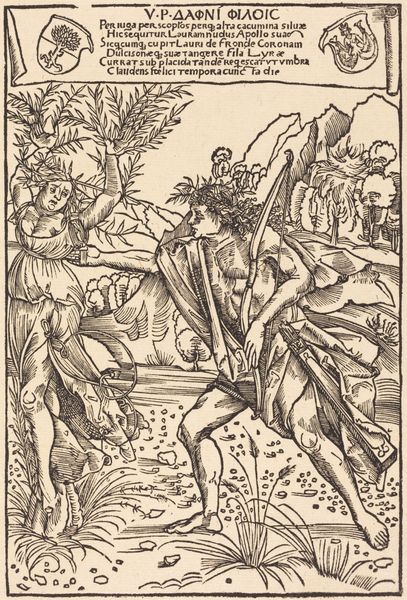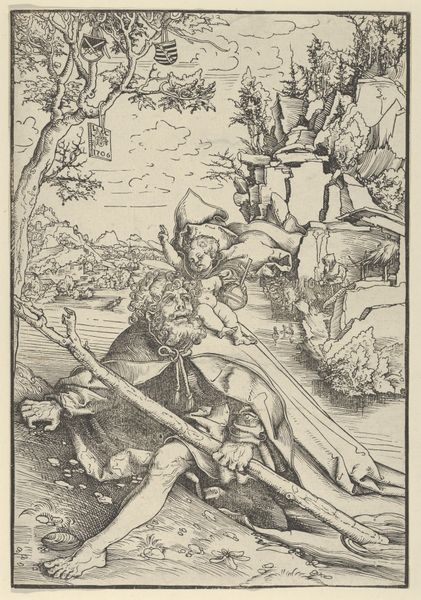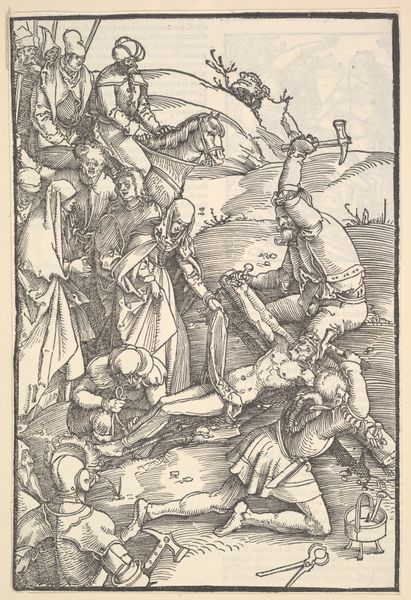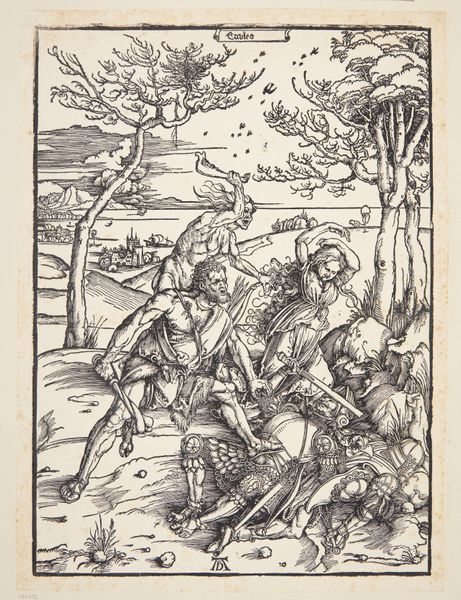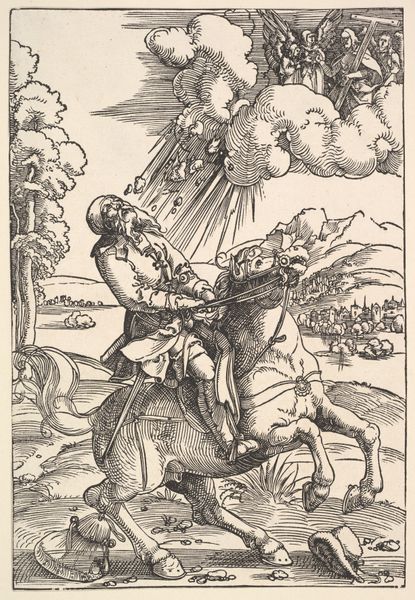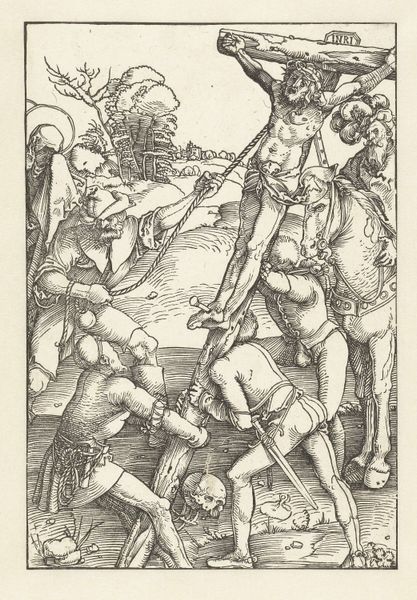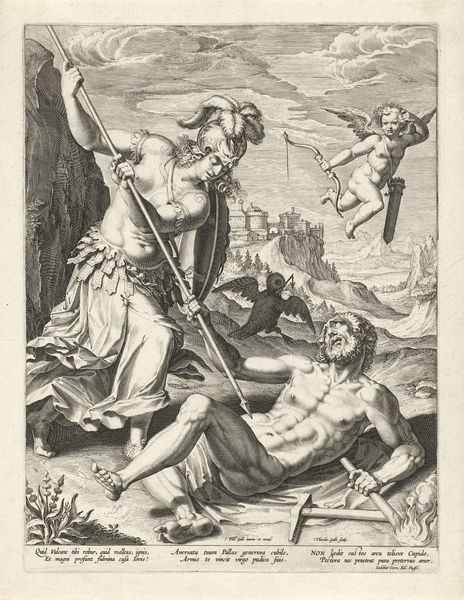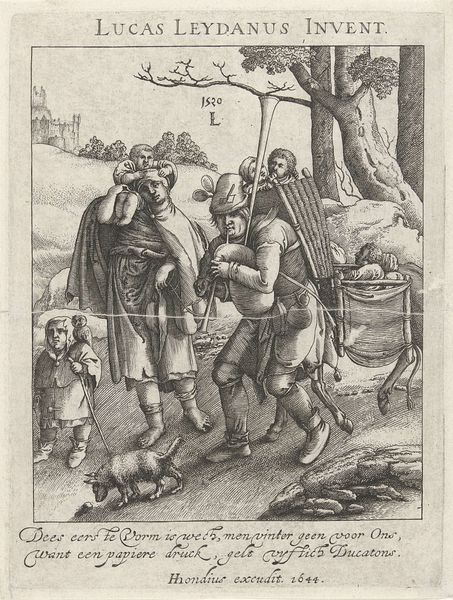
Dimensions: height 212 mm, width 141 mm
Copyright: Rijks Museum: Open Domain
Editor: This is Albrecht Dürer's "Saint Christopher Carrying the Christ Child," made between 1503 and 1504, using engraving. I'm struck by the intense detail in the landscape. What stories do you think this image tells about power and representation at that time? Curator: That's a great starting point. Look at Christopher. He’s physically imposing, yes, but burdened. He is, in effect, carrying the weight of the world. What does it mean that this very male figure is literally supporting Christ? Editor: I guess I hadn’t thought of it that way. It feels almost subversive, considering the period? Curator: Exactly! Remember the socio-political context: religious dogma, tightly controlled representations of divinity, and Dürer disrupting all of it. Think about gender, too. In what ways are ideals of masculinity and divinity being renegotiated in this image? Saint Christopher's labor supports a larger religious and social structure, but he's essentially an everyman bearing that burden. Editor: So it’s about shifting the focus from the purely divine to a more… earthly, human struggle? Curator: Precisely. The landscape itself mirrors that struggle. Notice how the turbulent waters reflect societal unrest. The act of crossing becomes an act of defiance, even of revolution in its own right. Dürer challenges the status quo. It asks us, even now, to question who bears the burdens, who benefits, and what new worlds can be made by daring to cross the river? Editor: It really makes you reconsider who has the power in this narrative, it's not just about who's being carried, but about who is doing the work. I see this piece in a totally new way now. Curator: I agree. The beauty of art history lies in the multiple readings that continue to be revealed when we ask meaningful questions and open up critical dialogues with artworks.
Comments
No comments
Be the first to comment and join the conversation on the ultimate creative platform.
